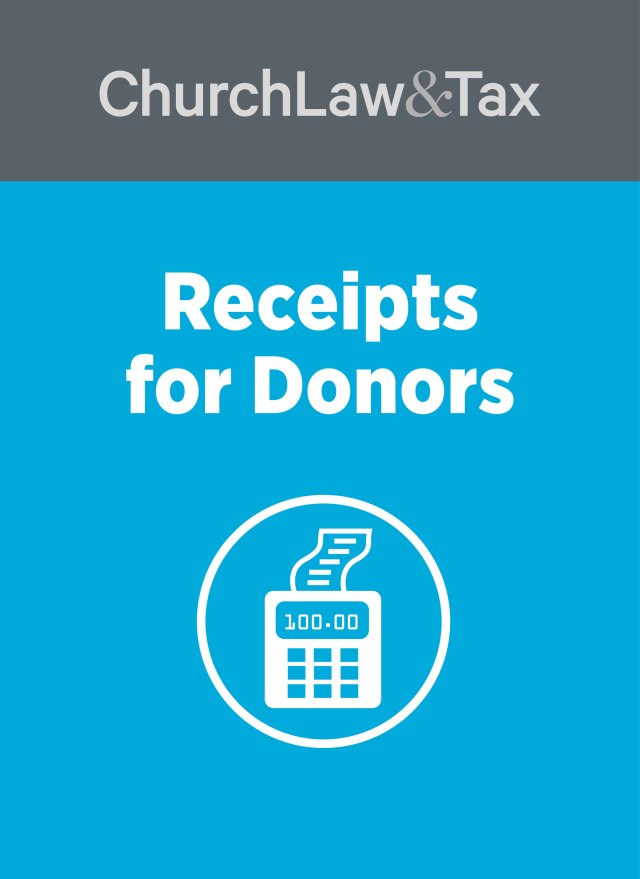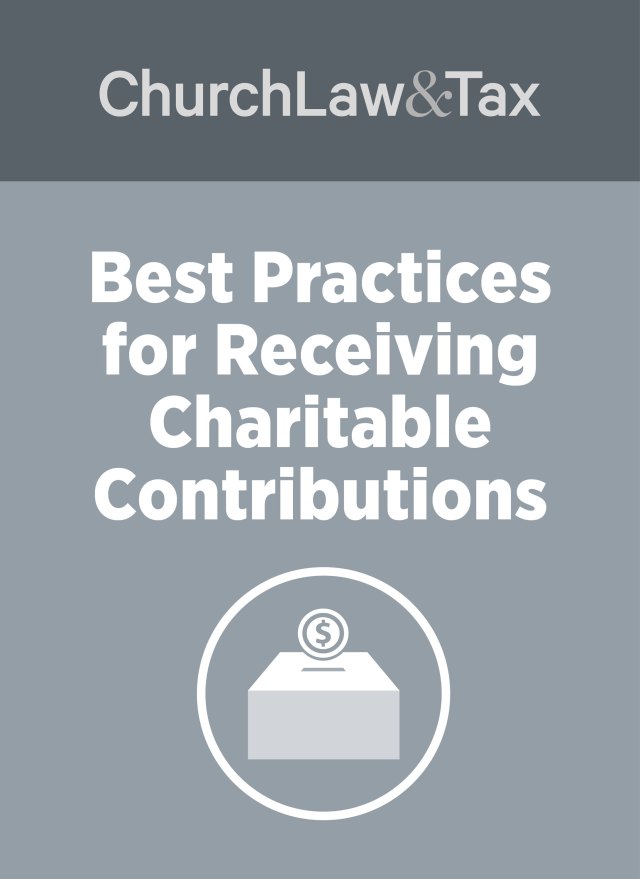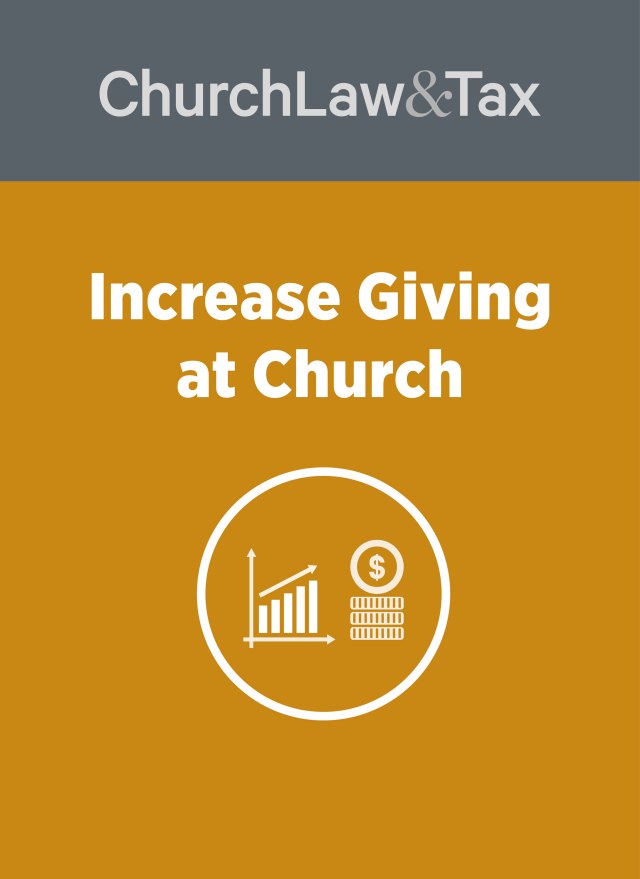Key point. Charitable contribution deductions for contributions of noncash property are subject to various substantiation requirements. Failure to comply with these requirements can result in a loss of any deduction even if there is no doubt that a contribution was made.
The United States Tax Court disallowed a married couple's $37,315 charitable contribution deduction for lack of proper substantiation.
On Schedule A, Itemized Deductions, of their 2011 federal income tax return, a married couple (the "taxpayers") claimed a charitable contribution deduction of $37,315 for noncash charitable contributions, which the IRS disallowed in its entirety.
Taxpayers did not produce a receipt
The taxpayers contend that they donated property during 2011 to four charitable organizations: the Upper Dublin Lutheran Church (Church), Goodwill Industries (Goodwill), the Military Order of the Purple Heart Service Foundation (Purple Heart), and Vietnam Veterans of America (Vietnam Veterans). The taxpayers' noncash contributions to the Church consisted of items they allegedly donated to its 2011 annual flea market. These items included books valued at $8,000, household items valued at $1,303, clothing valued at $1,000, toys valued at $822, telescopes valued at $800, jewelry valued at $780, and household furniture valued at $410, for a total of $13,115.
The taxpayers did not produce a receipt or an acknowledgment from the Church for their donations of any of these items. The Church was evidently equipped to provide such receipts, because petitioners claimed to have a receipt from the Church for their contributions to the 2012 flea market. The taxpayers produced no evidence, such as photographs, that any of the listed items were actually delivered to the Church. The Church did not inform the taxpayers whether any of the items allegedly contributed were sold or at what price.
The taxpayers' noncash contributions to Goodwill, Purple Heart, and Vietnam Veterans allegedly consisted of clothing valued at $20,920, household furniture valued at $2,680, household items valued at $350, and toys valued at $250, for a total of $24,200. They produced no documentary evidence, and had no recollection, as to which items were donated to which charity. They produced a spreadsheet, created during the IRS audit, that listed various items—e.g., 67 blouses, 45 dresses, 70 dress shirts, 22 dress coats, and 100 baby outfits—and assigned "estimated amounts" as the fair market values of these items. The taxpayers contended that these items, in the aggregate, were divided in some manner among the three charities.
For Goodwill, the taxpayers testified that they took batches of items at various times to a Goodwill location. They generally made these trips in the early morning or evening, when the Goodwill warehouse was unattended. They placed soft goods in large bins intended for after-hours drop-offs. They left large items, such as furniture, outside the warehouse door. The taxpayers testified that they were careful to ensure that the items in each batch were worth less than $250 because they thought this eliminated the need to get receipts.
For Purple Heart and Vietnam Veterans, the taxpayers allegedly scheduled a pickup and left the items outside their house. The charity sent a truck to pick up the items, generally while petitioners were away, and usually left a doorknob hanger saying, "Thank you for your contribution." These doorknob hangers contained no other information. They were undated; they were not specific to the taxpayers; and they did not list or describe the property contributed.
The taxpayers testified that they created index cards recording the items as they were delivered to Goodwill or left for pickup by Purple Heart or Vietnam Veterans. They later aggregated this information into a master list. When the time came to prepare their 2011 tax return, they assigned estimated values to the items. The taxpayers did not introduce into evidence the index cards they allegedly prepared or any other contemporaneous records supporting their contention that they made the alleged gifts. They supplied no evidence concerning their cost bases in these items or the manner in which they determined fair market values.
The IRS timely issued petitioners a notice of deficiency disallowing for lack of substantiation all of their claimed noncash contributions totaling $37,315. The IRS also determined an accuracy-related penalty. Petitioners timely sought review in the Tax Court.
Substantiation of charitable contributions
The court began its opinion by noting that charitable contribution deductions are allowed "only if the taxpayer satisfies substantiation requirement," and that "the nature of the required substantiation depends on the size of the contribution and on whether it is a gift of cash or property."
For contributions of $250 or more, the taxpayer must obtain a "contemporaneous written acknowledgment" from the charity. Separate contributions of less than $250 are not subject to this requirement regardless of whether the sum of the contributions made by a taxpayer to a charity during a taxable year equals $250 or more. The main substantiation requirements are summarized below.
Contributions of property valued at $250 or more
Contributions of noncash property valued by a donor at $250 or more must be substantiated with a contemporaneous written acknowledgment that
(1) includes "a description (but not value) of any property other than cash contributed"; (2) states whether the donee provided any goods or services in exchange for the gift; and (3) if the donee did provide goods or services, include a description and good-faith estimate of their value. The acknowledgment is "contemporaneous" if the taxpayer obtains it from the donee on or before the earlier of: (1) the date the taxpayer files a return for the year of contribution; or (2) the due date, including extensions, for filing that return.
Contributions of property valued at more than $500
The court noted that while the taxpayers' failure to satisfy the substantiation requirements for contributions of $250 or more "was fatal to their claim," it went on to summarize the substantiation requirements for noncash contributions in excess of $500:
Taxpayers are required to maintain additional reliable written records with respect to each item of donated property. These records must include, among other things: (1) the approximate date the property was acquired and the manner of its acquisition; (2) a description of the property in detail reasonable under the circumstances; (3) the cost or other basis of the property; (4) the fair market value of the property at the time it was contributed; and (5) the method used in determining its fair market value.
The taxpayers claimed that they made noncash contributions to four different charities of seven categories of items, each with a claimed value exceeding $500, "but they did not maintain written records establishing when or how these items were acquired or what their cost bases were. Nor did they maintain written records establishing how they calculated the items' fair market value."
Donations of clothing and household items
No deduction is allowed for "any contribution of clothing or a household item" unless such property is "in good used condition or better." The tax regulations specify that the term "'household items" includes "furniture, furnishings, electronics, appliances, linens, and other similar items." Food, paintings, antiques, and other objects of art, jewelry and gems, and collections are excluded from the definition.
A deduction may be allowed for a charitable contribution of an item of clothing or a household item not in good used condition or better only if the amount claimed for the item is more than $500 and the taxpayer obtains a qualified appraisal of the property and attaches a qualified appraisal summary (Form 8283) to the tax return claiming the deduction.
If the donated item is in good used condition or better and a deduction in excess of $500 is claimed, the taxpayer must file a completed Form 8283 (Section A or B, depending on the type of contribution and claimed amount), but a qualified appraisal is required only if the claimed contribution amount exceeds $5,000.
If the donor claims a deduction of less than $250, the donor must obtain a receipt from the church or charity or maintain reliable written records of the contribution. A reliable written record for a contribution of clothing or a household item must include a description of the condition of the item. If the donor claims a deduction of $250 or more, the donor must obtain from the church or charity a receipt that meets the requirements of a contemporaneous written acknowledgment (see above).
The court concluded:
Most of the items the taxpayers allegedly donated consisted of clothing and household items. They failed to present credible evidence that these items were "in good used condition or better," and they did not furnish a qualified appraisal with their return. For all these reasons, petitioners have not satisfied the substantiation requirements for donations of property valued over $500.
The court has no doubt that the taxpayers did donate some property to charitable organizations during 2011. But the tax code imposes a series of increasingly rigorous substantiation requirements for larger gifts, especially when they consist of property rather than cash. Because the taxpayers did not satisfy these requirements, we are unable to allow a deduction for their claimed noncash gifts.
What this means for churches
Americans love to donate used clothing and household items to charity. The IRS reports that the amount claimed as deductions in a recent year for clothing and household items was more than $9 billion. These items are notoriously difficult to value, and the attempt to do so wastes valuable time and resources.
The tax code responds to this dilemma by denying a charitable contribution deduction for a contribution of clothing or household items unless the clothing or household items are in "good used condition or better." The Treasury Department is authorized to deny (by regulation) a deduction for any contribution of clothing or a household item that has minimal monetary value, such as used socks and used undergarments.
A deduction may be allowed for a charitable contribution of an item of clothing or a household item not in good used condition or better only if the amount claimed for the item is more than $500 and the taxpayer obtains a qualified appraisal of the property and attaches a qualified appraisal summary (Form 8283) to the tax return claiming the deduction.
Household items include furniture, furnishings, electronics, appliances, linens, and other similar items. Food, paintings, antiques, and other objects of art, jewelry and gems, and collections are excluded from the definition.
If the donated item is in good used condition or better and a deduction in excess of $500 is claimed, the taxpayer must file a completed Form 8283 (Section A or B, depending on the type of contribution and claimed amount), but a qualified appraisal is required only if the claimed contribution amount exceeds $5,000.
Failure to understand and comply with these rules can lead to a loss of a charitable contribution deduction. As a result, it is helpful for church leaders to be familiar with these rules so they can advise persons who donate clothing and household itemss. Kunkel v. Commissioner, T.C. Memo. 2015-71 (U.S. Tax Court 2015).



